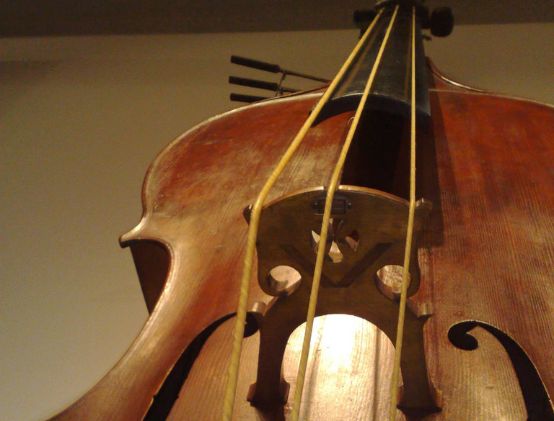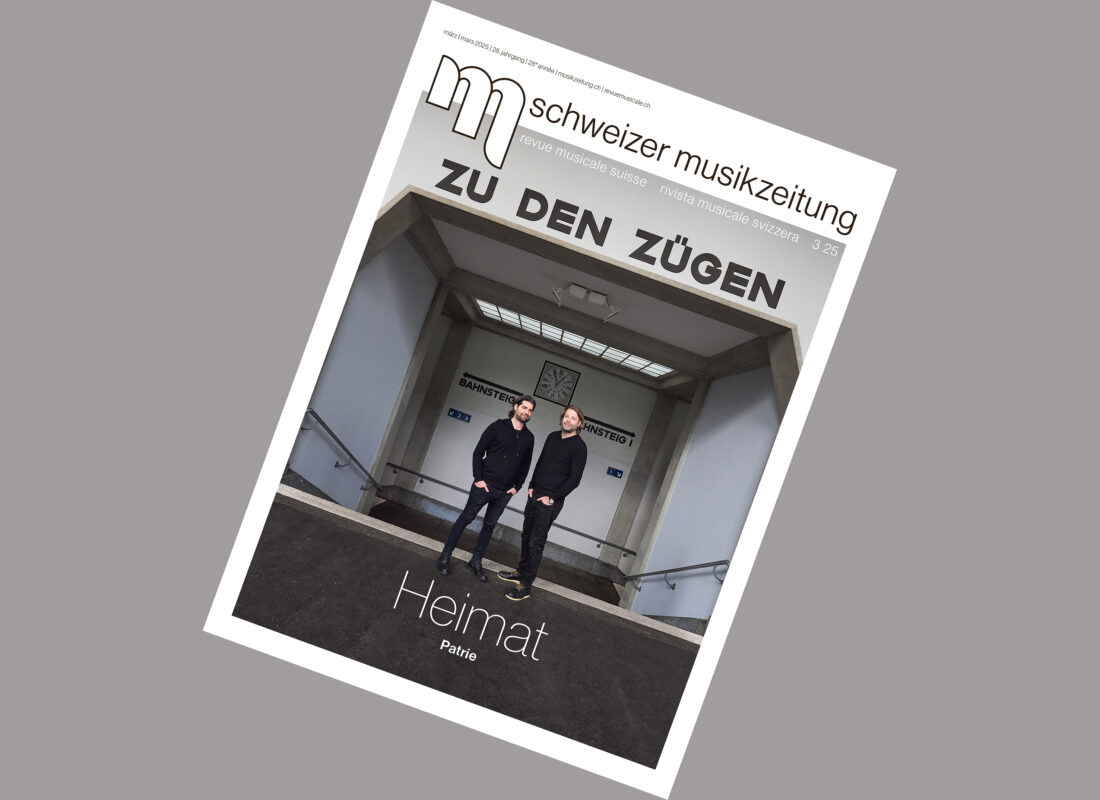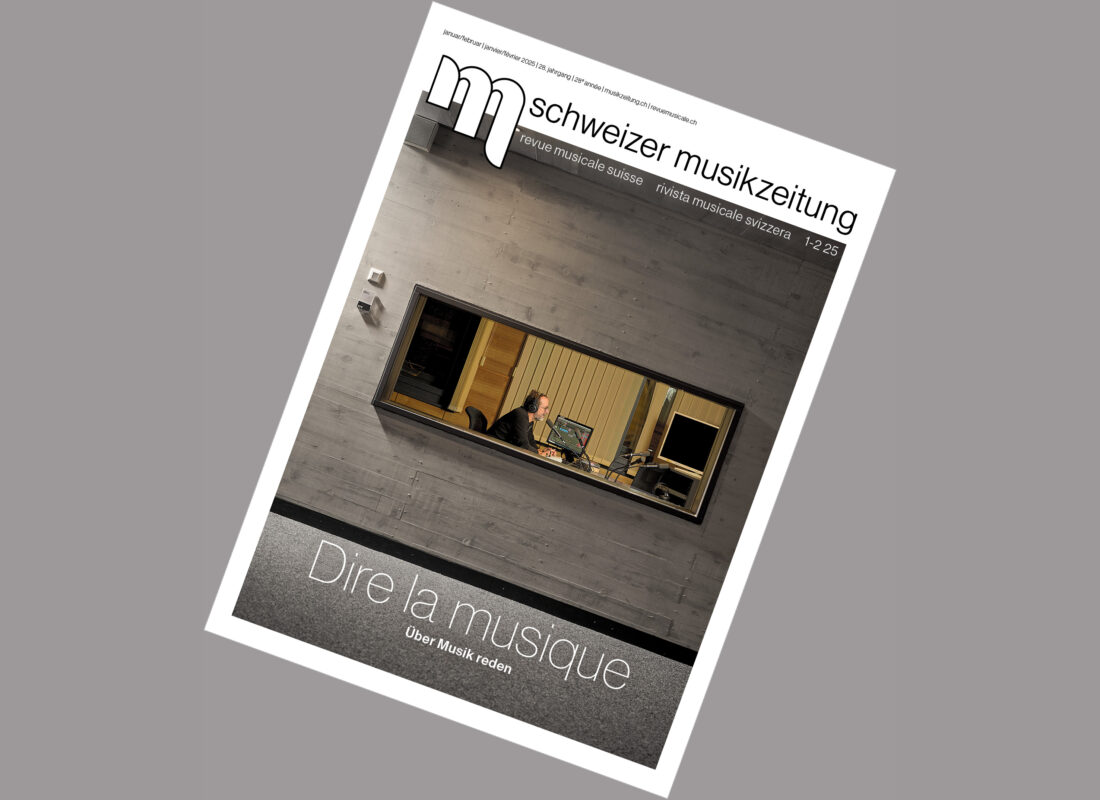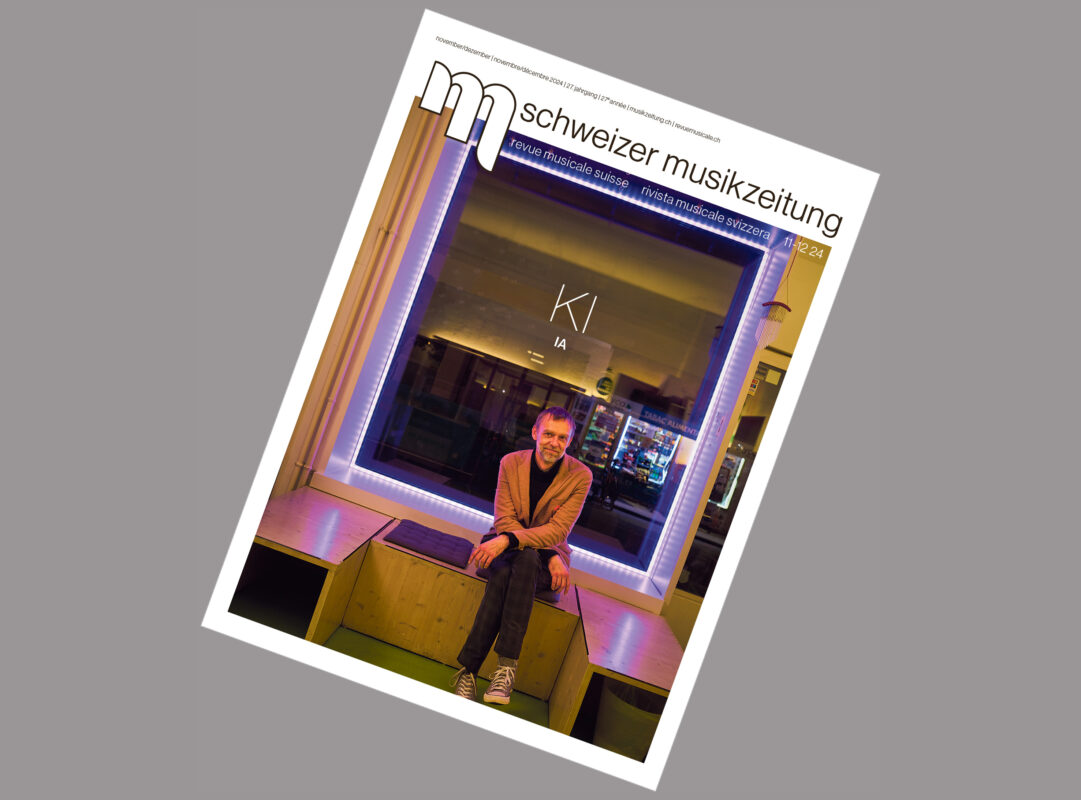Berlioz and the octobass
Numerous legends still surround the composer's relationship with the colossal bass instrument. Many of them can be dispelled by taking a closer look at the surviving sources.


Numerous legends still surround the composer's relationship with the colossal bass instrument. Many of them can be dispelled by taking a closer look at the surviving sources.
In the Journal des débats of November 27, 1851, Hector Berlioz intones a hymn of praise for the octobass: "This instrument, which stands out above all for the beauty of its tones, would be extremely useful for the great orchestras, on condition that composers write it its own part and not simply have it double the double bass part."

- Jean-Baptiste Vuillaume in his studio in 1860
- Photo: Moulin Workshop/ wikimedia commons
Did Berlioz use the same words at the premiere of his Te Deums played the octobass in the church of Saint Eustache on April 30, 1855? Or at the performance of three movements of this work on the occasion of the Universal Exhibition in Paris a few months later? There is a great deal of contradictory information about the composer's relationship to this particular instrument. It is even claimed - without substantiated evidence - that Berlioz commissioned it from the violin maker Jean-Baptiste Vuillaume or that he himself was behind the invention. To this day, however, no trace of the octobass being used in the concertos conducted by Berlioz has been found. Such use is only mentioned in later, unfounded conjectures without a reliable source (sometimes written by renowned musicologists). There is no evidence that this instrument was not used. But such an event would undoubtedly have left tangible traces, if not for the description by a contemporary witness. (The same applies to the fantasies about other composers who are said to have used the octobass, or the confusion with other great double bass types).
In this context, it should be noted that some authors also claim that the Te Deum was premiered on the occasion of the opening of the World Exhibition in Paris (2nd World Exhibition). However, this opening took place on May 15, 1855, two weeks after the concert in the church of Saint Eustache. Could the confusion stem from the fact that the Universal Exhibition was originally scheduled to open its doors two weeks earlier, on May 1? (Further confusion is caused by authors who still wrongly give this earlier date as the opening date; not to mention those who assume an incorrect concert date, such as Henry Barraud, who in his Berlioz biography confuses the dress rehearsal with the first performance). If the performance of the Te Deums had been more closely linked to the World Exhibition, it would have been postponed to coincide with the opening date. In fact, Berlioz benefited from the proximity of this event to present his work to the public, which he had already attempted in vain at the enthronement and marriage of Napoleon III. The contract for the first performance of the work and thus also for the concert on 30 April, co-organized by the composer, states: " ... on the occasion of the Universal Exhibition of 1855, for the benefit of the poor of the parish of Saint Eustache, a Te Deum composed by M. H. Berlioz will be performed ..." The proceeds from the concert were distributed as follows: 30% for the parish poor fund, 20% for needy children in the 3rd arrondissement and 30% for Berlioz.

- Colossal instrument
- Photo: Schoonderwaldt/ flickr
During the revision of his Grand Traité d'instrumentation et d'orchestration modernes In August 1855, the first edition having appeared in 1844, Berlioz included Vuillaume's invention in the chapter on "New Instruments", after the saxophone family, the concertina, an early harmonium and other innovations. Did he take this opportunity to ask the violin maker for a "detailed description of your octobass and some information on the function of the movable keys operated by the left hand"? The short message is only dated "Tuesday, 21st, evening", without month and year. However, as the traité contains a diagram of the tuning of the bass, the request may very well be related to the revision. Moreover, August 21, 1855 was indeed a Tuesday. The message also proves that Berlioz could not have been the inventor of the instrument, in which case he would have known about it. In the Traité, Berlioz mentions the tuning and the range ("only an octave and a fifth" - he does not mention the possibility of using harmonic tones), reminds us that the octobass is tuned only an octave lower than the cello (i.e. a third lower than the 4th string of the double bass), he mentions that the octobass is tuned only an octave lower than the cello (i.e. a third lower than the 4th string of the double bass) and that the cello is tuned a third lower than the cello. He describes Vuillaume's playing mechanism and adds that "the octo-bass (cannot) execute rapid series of notes, and must be given a special voice, different in some respects from the contrabass". Berlioz concludes with the assessment: "This instrument possesses tones of strange power and beauty, full and strong, without roughness. It would be admirably effective in a large orchestra, and all orchestras at music festivals where the number of instruments exceeds 150 should have at least three of them."
Quoted from: Hector Berlioz: Instrumentationslehre: ein vollständiges Lehrbuch zur Erlangung der Kenntniss aller Instrumente und deren Anwendung, nebst einer Anleitung zur Behandlung und Direction des Orchesters; mit 70 Notentafeln und vielen in den Text gedruckten Notenbeispielen, ed. by Alfred Dörffel, G. Heinze-Verlag, Leipzig 1864
Available online at: Bavarian State Library digital, Octobass, Page 230ff.








